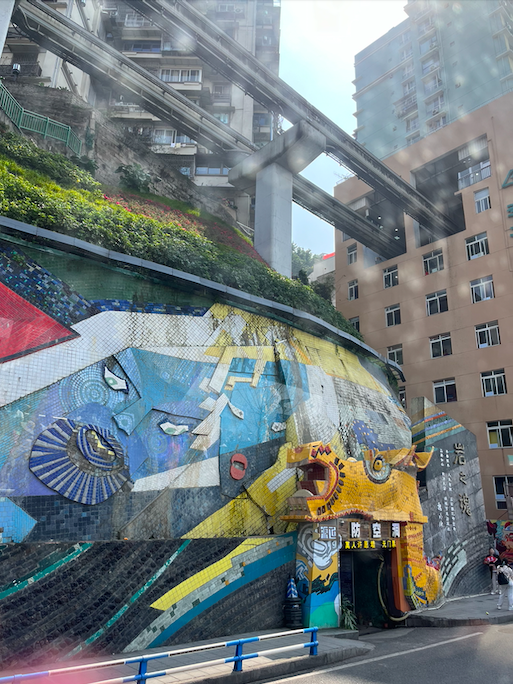“Wish you every day of Double Happiness(重庆)!”
We’ve finally arrived in the beautiful megacity of Chongqing! All the hypes were worth it as we are welcomed by the most warm and bright sunlight. On our way to Liziba on the bus, our local guide Windy introduced us to the bomb shelters hidden in the mountain. It’s interesting they are turned into wine storages now. But I cannot help but think about the reason Windy provided for why Chongqing has its unique 8D landscape as it is. Not only is it naturally located in mountainous areas but also because it has endured for six years of air bombings due to Sino-Japanese war. The forming of an urban landscape as well as its subsequent city planning is a complicated development due to both environmental and historical conditions.

It’s hard to imagine a sense of “old Chongqing” from the modern high-rises we see from the beautiful view of E-ling Park Tower later in the day. I learned from the taxi driver that E-ling (鹅岭) Park gains its name from the shape of the central peninsula assembling that of a goose. The park is built on the “back” of the goose with the highest peak. We passed by a parachute tower on our way to the park, and the taxi driver introduced me that the tower was used as training base for pilots to jump from their planes. He laughed about how it’s only 30m high, and they expected the pilots to have good trainings. Again, the image of the wartime Chongqing, where one can only pick up traces left on the city occasionally, stuck in my head.
What it takes for a city to transform from that to where it is today? What is being front-loaded as the image of modernity and what is being lost in the process? I think this is a question that I will think about for a long time.

